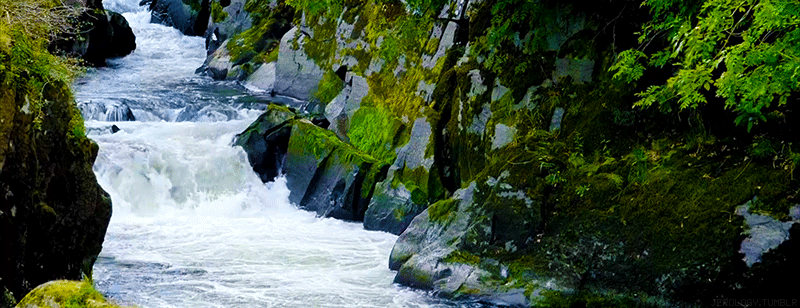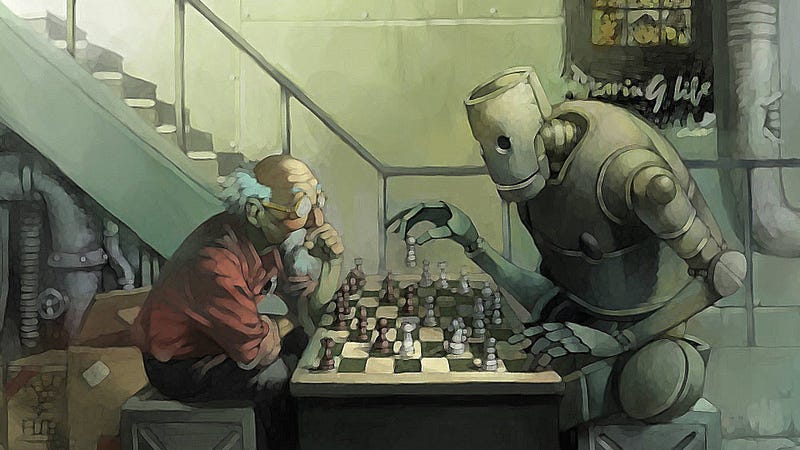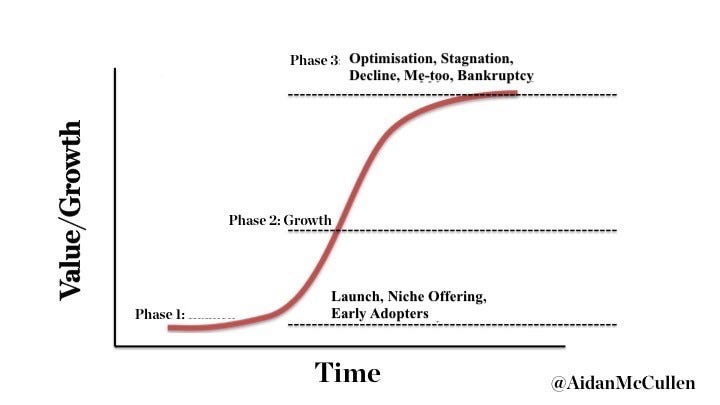
“The Phoenix Must Burn to Emerge.” — Janet Fitch
In Greek mythology, the Phoenix is a mythical bird that lives for 500 years before obtaining new life by arising from the ashes of its predecessor.
I am incredibly fortunate to have grown up in the Phoenix Park, Dublin, Ireland. (Although some may disagree,) I was not a feral child, but rather my father was the (recently retired) Park Superintendent. He is largely responsible for renovating the Park to its current glory, where he meticulously sourced old maps, drawings and materials to understand what it looked like in its prime. (His book on the subject is here.)When we first moved to the park from a small country village it was not a very pleasant place, it was neglected and in need of some investment. Before he even began in the role, my father immediately identified that the mature trees that adorned the main avenue would all die in the coming decades. He set about securing budget for succession planning to plant new trees in between the beautiful mature trees along the avenue. He told us that the older trees would shelter the younger ones as they grew and would eventually take over from them.
“The best time to plant a tree was 20 years ago. The second best time is now.” — Chinese Proverb
This Thursday Thought focuses on business succession planning, let’s call them “Phoenix Businesses”. These are not businesses who plan for employee churn, but rather consistently renew themselves by using the ashes of their previous incarnation as sustenance during their early fragile fledgeling states. Just like the mature trees in the Phoenix Park, the mature business protects their successor saplings to ensure the survival of the species with as little disruption as possible to the ecosystem.
The challenges we experience in personal transformations echo those experienced by any business. When we are operating in a certain paradigm (pattern), it is very difficult to change our view. Excuse the obvious pun here, we cannot see the wood for the trees, because we are so involved in our current reality that we do not understand the most important parts of it. Equally, we are so involved in protecting current profits, that we cannot foresee possible disruptions.
In reality, the mindset needed to transform oneself in any way is the same mindset that is required by business leaders facing todays uncertain business environment.
To succeed in life, we cannot stagnate. When we can achieve even marginal gains today compared to the person/business we were yesterday, then we are progressing. It is when we are blind to necessary evolution, wilfully or not, that we are in danger. Greek philosopher Heraclitus said: “Whoever cannot seek the unforeseen sees nothing, for the known way is an impasse.” The known way appears safe, but it is a cul de sac, which leads to stagnation, decline and death.
First an Act of Destruction: Fire Regimes
“Every act of creation is first an act of destruction.” — Pablo Picasso
A fire regime refers to the pattern of wildfires in an area over long periods of time. Since the 1900’s, man has tampered with natural fires to inhibit the resulting destruction. However, wildfires are actually essential for the renewal of natural ecosystems. If wildfires are too infrequent, plants may mature, deteriorate, or die without ever releasing their seed. Equally, if wildfires are too frequent, plants may be killed before they ever mature, or before they have released their seed to ensure the continuation of their species.
Trees, fauna and foliage in the forests prone to fires have adapted in fascinating ways. Some trees for example, produce resin-coated cones containing mature seeds that are only activated when fire breaks out. The heat of the fire melts the resin around the cones, releasing the seeds, that have been waiting dormant for their opportunity to germinate. Other forest plants contain seeds that have a thick outer coating, these seeds require fire to burn off their outer shell to release their seed. Just like the phoenix, they subsequently rise from the ashes.
Businesses can learn a lot from forest fires ecosystems (as can humans), we will look at those lessons next.
Decay Rate”S”

“No man ever steps in the same river twice, for it’s not the same river and he’s not the same man.” — Heraclitus 535 BC — 475 BC
The change that punctuates life also permeates through the business landscape. Businesses must evolve to meet new market expectations just as forest life adapted to frequent forest fires. Disruption and/or evolution demands new skillsets and much more importantly new mindsets. Recalling to mind the seeds that lay dormant within a resin-coated cone awaiting a forest fire, business leaders should invest in new skillsets and mindsets before they are ever required. When the (business) shell burns away due to an unexpected change in market conditions or a new-market disruptor, the business can call upon a crop of new breeds/evolved breeds to step up. The key here is that the new skills involve unlearning as much as learning anew.
For the purpose of this Thursday Thought, let us turn our attention now to the “competitive relevance” of companies, which has an increasingly shorter lifespan, especially if the company does not believe in business “succession” planning. Due to the speed of change driven by factors such as fast-evolving technology, customer demands and fluctuations in market dynamics the linear lifespan of companies is declining rapidly. (As discussed on the Innovation Show EP 115: Topple: The End of Firm-Based Strategy with Ralph Welborn, PhD). It is not helpful to envisage businesses — nor lives for that matter — in a linear fashion. Linear suggests there is a start and a finish and you continue on a straight line until you die, we are not made for that, that is not realistic in life, nor in business. There are helpful ways to visualise evolution, such as S Curves and Decay Rates.
S curves can be used to map the performance of a company or product (or life/career/hobby) over a period of time. S curves follow the shape of the letter S with a flat growth at the bottom of the S, followed by rapid growth and then a dominant position in the market at the top of the S. After market dominance, businesses or products start to plateau and experience stagnation, process optimisation, automation, job cuts and me-too propositions.
While market dominance is desirable in any endeavour, success can be a terrible teacher. When we are dominant in any field we often become complacent and stop learning, stop seeking and stop being curious. We become fixated on maintaining growth by optimising, cost cutting and entering new geographical markets.
To Innovate, both companies and leaders must ALSO (not instead) manage the contrast of jumping from one S curve to the next. This jump is an evolutionary jump and always looks like a step backwards. The challenge for leaders is that creating something new usually means letting go of something old. Think back to the mature trees and the saplings, they are grown simultaneously, well before the older trees expire. Likewise, businesses must invest in new directions well before their current business experiences any decline.

IBM is a great champion of jumping the S Curve and thus securing its future. IBM has been dabbling in the world of AI, Machine learning and algorithms for decades. The famous chess matches between IBM supercomputer Deep Blue and (then) world champion Garry Kasparov took place over two decades ago in 1996. IBM made a carefully informed bet on their next jump and it is now that this bet is paying off. The AI seeds have been incubating carefully waiting for their time on stage and now is that time.
Now imagine IBM did not incubate, nor invest, nor take a punt? That would mean the end of road for IBM, a long, painful kiss goodnight. Like many things in life, there is always a choice.
Being in Control
“Death is nature’s way of making things continually interesting. Death is the possibility of change. Every individual gets its allotted lifespan, its chance to try something new on the world. But time is called and the molecules which make up leaf and limb, heart and eye are disassembled and redistributed to other tenants.” ― Peter Steinhart
I would rather be in control of my own destiny, than leave it entirely to fate. I am guessing you would echo the same sentiments. Equally, businesses would rather have a hand in their future direction than leave them to chance. I am a believer in the path of least resistance and that when doors don’t open for you they are not meant for you. However, I also believe many people use that as an excuse not to try. You simply have to do the work, there is no escaping that. Doing the work, whatever it is, coupled with fate is a much stronger combination than fate alone. Managing the business as it is today and leading the business of tomorrow is a powerful combination. Businesses simply must devote effort to the future of their business, the saplings, the seeds of tomorrow or the lineage will end with them.
On this week’s innovation show, I talk with author of “The Creative Curve”, Allen Gannett. Allen shares frameworks for creativity in everything from movies to ice cream. There is power in understanding frameworks, they are like a programme for the gym. Vitally important is the constraints we work with. When you understand your constraints, you understand what you are working with.
Having been a professional rugby player meant we must retire at a young age, this is a constraint you need to work within. You have a decay rate. To rise from the ashes of that world, you must be willing to kill that old version of yourself. You can take the best bits from the ashes and merge them with your new skills and create a better evolved version of yourself. This was a tremendous gift professional rugby bestowed on me. This is a framework to live by: killing yesterdays version of yourself every night and rising a new every morning.
Humans, like businesses have decay rates, the one great certainty is death (and taxes, thank you Marvin Gaye:). Decay rates are a framework, life is a framework. Knowing you are going to die makes living all the more exciting, sometimes we need to be reminded of that.
“Death twitches my ear. Live, he says, I am coming.” — Virgil
THANKS FOR READING, PLEASE CLICK A LIKE SO OTHERS MAY SEE THIS
This week’s innovation show is
EP 125: The Creative Curve: How to Develop the Right Idea, at the Right Time with Allen Gannett
As the world’s most creative people have discovered, we are enticed by the novel and the familiar. By understanding the mechanics of what is called “The Creative Curve” — the point of optimal tension between the novel and the familiar — everyone can better engineer mainstream success.
Big Data entrepreneur, CEO of Trackmaven and author of “The Creative Curve” Allen Gannett reveals four laws of creative success and identifies the common patterns behind their achievement.
We talk:
- The origin of the creativity myth
- The myth of the lightbulb moment
- The patterns behind the creative curve
- The four laws of the creative curve:
- Law of consumption
- Law of imitation
- Law of creative communities
- Law of iterations
Have a Listen:
- Web http://bit.ly/2FwsOJw
- Soundcloud https://lnkd.in/gBbTTuF
- Spotify http://spoti.fi/2rXnAF4
- iTunes https://apple.co/2gFvFbO
- Tunein http://bit.ly/2rRwDad
- iHeart http://bit.ly/2E4fhfl
More about Allen here:

